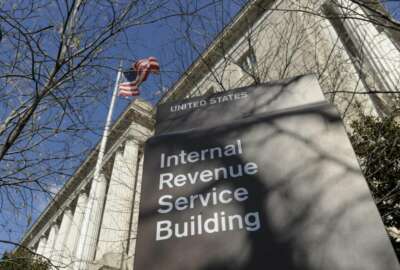IRS Commissioner Chuck Rettig, in back-to-back hearings last week, gave lawmakers a sneak peek of the agency’s latest effort to overhaul its legacy IT and modernize the programming language it runs on.
But on Thursday, the agency released the full details of its six-year Integrated Modernization Business Plan, which will cost up to $2.7 billion. For FY 2020, the IRS has requested $290 million for IT modernization.
The plan looks to deliver on many of the goals outlined in the agency’s strategic plan released last year, and prior to that, the agency had spent several years talking about a “Future State” strategy.
Despite the agency’s repeated calls for IT modernization over the past 25 years, several new elements stand out in this latest proposal:
Legacy IT costs keep growing
The IRS’s push to modernize IT has spanned the tenure of multiple commissioners and multiple administrations, but the report highlights the increasing cost of maintaining legacy IT as one reason to take more of its legacy systems offline.
The IRS currently spends more than $2 billion a year to keep its IT infrastructure running, but the agency expects those costs could creep up to more than $3 billion by fiscal 2026 “if current trends continue.”
“The cost of maintaining the current complex technology ecosystem continues to grow every year on an unsustainable trajectory. The cost of operating these systems is overtaking other important components of effective tax administration and limiting capacity to deliver quality service,” the report states.
As Rettig explained to lawmakers last week, patching and layering new business applications over the years has created a complex IT infrastructure that impedes its ability to keep pace with its increased workload.
Reducing the complexity of its IT systems will allow the agency to more quickly identify the cause of systems outages, such as last year’s Tax Day glitch that led to the agency pushing back the tax filing deadline by an extra day.
“If and when disaster strikes, the story shouldn’t be that a system went offline but rather how quickly we recovered and resumed normal operations,” Rettig wrote in a joint statement with Jeffrey Tribiano, the deputy commissioner for operations support, and Kirsten Wielobob, the deputy commissioner for services and enforcement.
Through its Enterprise Case Management (ECM) program, the IRS looks to decommission about 60 case management systems over the course of the plan.
The agency also looks to stand up an Individual Tax Processing Engine (ITPE) project, which will convert about 200,000 lines of legacy assembly language to a modern software language, a “major milestone” toward retiring the Individual Master File, a nearly 60-year old system that holds payment records on every taxpayer in the country.
Automation picking up steam
The IRS has already found some success adopting robotic process automation, but the six-year strategy looks for greater uses of both RPA and machine learning to provide “almost-instant document analysis” for its compliance division.
“These technologies will aid in eliminating error-prone and time-consuming manual work. This change reduces the need for manually intensive processes by IRS staff, allowing them to focus on implementing modernization technologies and processes,” the report states.
Through the first phase of the modernization plan, the IRS looks to stand up IT help desk self-service capabilities through natural language processing.
Last September, the IRS awarded its first RPA contract to reduce the amount of time procurement professionals spend on manual processes. Through RPA, the agency expects to save its contracting workforce up to 15,000 hours a year.
Data investments paying off
The agency has touted the success of its Return Review Program (RRP), which integrates taxpayer data from multiple sources and provides flags potential cases of fraud and tax noncompliance.
Between January 2015 and August 2018, the Return Review Program decreased identity theft cases by more than 60%, and since August 2018, RRP has protected over $13.09 billion in revenue, more than a 1500% return on investment.
In phase two of its six-year modernization strategy, the IRS looks to implement Real Time Tax Processing (RTTP), which would allow taxpayers to more easily make adjustments to their tax returns.
In addition, the agency looks to adopt enhanced analytics tools for fraud detection, as well as more to provide better taxpayer services.
“Ultimately, our data will be one of our strongest assets, allowing our workforce to make data-driven strategic and operational decisions,” the report states.
IRS needs IT expertise more quickly
The report also echoes Rettig’s request to Congress to restore critical pay authority, which would allow the agency to hire up to 40 short-term IT and cybersecurity personnel within six-to-eight weeks, as opposed to the six-to-eight months hiring process that most agency employees encounter.
The new hires would also receive pay beyond what the General Schedule system allows for career employees.
Copyright
© 2024 Federal News Network. All rights reserved. This website is not intended for users located within the European Economic Area.
